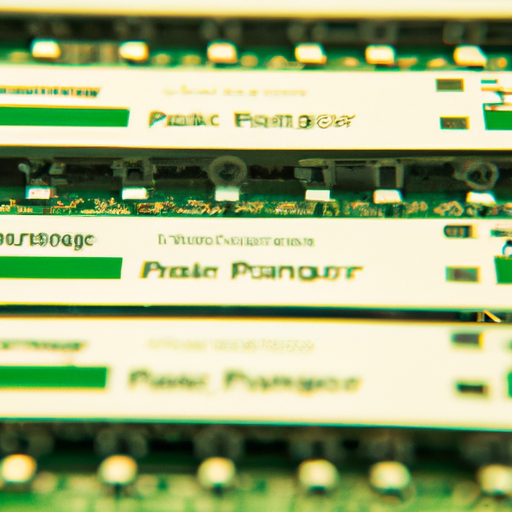

Title: FPGA On-Site Programming: Unlocking the Door Array with a Microcontroller

1. Understanding FPGA On-Site Programming (250 words) ----------------------------------------------------- 1.1 FPGA Basics: A brief overview of FPGAs and their programmable nature. 1.2 On-Site Programming: Explaining the concept of programming an FPGA without removing it from its hardware setup. 1.3 Microcontrollers: Introducing microcontrollers and their role in facilitating on-site programming of FPGAs.
2. Benefits of FPGA On-Site Programming (300 words) --------------------------------------------------- 2.1 Flexibility and Adaptability: Discussing how on-site programming enables quick updates and modifications to FPGA designs. 2.2 Cost-Effectiveness: Highlighting the cost savings achieved by avoiding physical replacement of FPGAs. 2.3 Reduced Downtime: Exploring how on-site programming minimizes system downtime during updates or bug fixes. 2.4 Scalability: Discussing how on-site programming allows for easy scalability of FPGA-based systems.
3. Challenges and Considerations (300 words) ------------------------------------------- 3.1 Security: Addressing potential security risks associated with on-site programming and ways to mitigate them. 3.2 Compatibility: Discussing the need for compatibility between the microcontroller and the FPGA for successful on-site programming. 3.3 Debugging and Testing: Exploring the challenges of debugging and testing FPGA designs during on-site programming. 3.4 Overcoming Limitations: Discussing potential limitations and ways to overcome them for successful on-site programming.
4. Applications of FPGA On-Site Programming (300 words) ------------------------------------------------------ 4.1 Internet of Things (IoT): Exploring how on-site programming of FPGAs can enhance IoT devices' functionality and adaptability. 4.2 Aerospace and Defense: Discussing the benefits of on-site programming for mission-critical systems in the aerospace and defense industry. 4.3 Industrial Automation: Highlighting how on-site programming enables real-time updates and modifications in industrial automation systems. 4.4 Telecommunications: Exploring the role of on-site programming in optimizing network infrastructure and improving communication systems.
5. Case Studies (200 words) --------------------------- 5.1 Case Study 1: On-site programming of FPGA-based door access control system using a microcontroller. 5.2 Case Study 2: On-site programming of FPGA-based image processing system for medical diagnostics.
Conclusion (100 words) ----------------------- FPGA on-site programming, coupled with a microcontroller, offers a powerful combination that unlocks numerous possibilities for various industries. The flexibility, cost-effectiveness, reduced downtime, and scalability provided by this approach make it an attractive choice for system designers and developers. However, it is crucial to address security concerns, ensure compatibility, and overcome debugging challenges to fully harness the potential of FPGA on-site programming. With advancements in technology and increasing demand for dynamic hardware solutions, the future of FPGA on-site programming looks promising, enabling rapid innovation and adaptability in a wide range of applications.
Title: FPGA On-Site Programming: Unlocking the Door Array with a Microcontroller

1. Understanding FPGA On-Site Programming (250 words) ----------------------------------------------------- 1.1 FPGA Basics: A brief overview of FPGAs and their programmable nature. 1.2 On-Site Programming: Explaining the concept of programming an FPGA without removing it from its hardware setup. 1.3 Microcontrollers: Introducing microcontrollers and their role in facilitating on-site programming of FPGAs.
2. Benefits of FPGA On-Site Programming (300 words) --------------------------------------------------- 2.1 Flexibility and Adaptability: Discussing how on-site programming enables quick updates and modifications to FPGA designs. 2.2 Cost-Effectiveness: Highlighting the cost savings achieved by avoiding physical replacement of FPGAs. 2.3 Reduced Downtime: Exploring how on-site programming minimizes system downtime during updates or bug fixes. 2.4 Scalability: Discussing how on-site programming allows for easy scalability of FPGA-based systems.
3. Challenges and Considerations (300 words) ------------------------------------------- 3.1 Security: Addressing potential security risks associated with on-site programming and ways to mitigate them. 3.2 Compatibility: Discussing the need for compatibility between the microcontroller and the FPGA for successful on-site programming. 3.3 Debugging and Testing: Exploring the challenges of debugging and testing FPGA designs during on-site programming. 3.4 Overcoming Limitations: Discussing potential limitations and ways to overcome them for successful on-site programming.
4. Applications of FPGA On-Site Programming (300 words) ------------------------------------------------------ 4.1 Internet of Things (IoT): Exploring how on-site programming of FPGAs can enhance IoT devices' functionality and adaptability. 4.2 Aerospace and Defense: Discussing the benefits of on-site programming for mission-critical systems in the aerospace and defense industry. 4.3 Industrial Automation: Highlighting how on-site programming enables real-time updates and modifications in industrial automation systems. 4.4 Telecommunications: Exploring the role of on-site programming in optimizing network infrastructure and improving communication systems.
5. Case Studies (200 words) --------------------------- 5.1 Case Study 1: On-site programming of FPGA-based door access control system using a microcontroller. 5.2 Case Study 2: On-site programming of FPGA-based image processing system for medical diagnostics.
Conclusion (100 words) ----------------------- FPGA on-site programming, coupled with a microcontroller, offers a powerful combination that unlocks numerous possibilities for various industries. The flexibility, cost-effectiveness, reduced downtime, and scalability provided by this approach make it an attractive choice for system designers and developers. However, it is crucial to address security concerns, ensure compatibility, and overcome debugging challenges to fully harness the potential of FPGA on-site programming. With advancements in technology and increasing demand for dynamic hardware solutions, the future of FPGA on-site programming looks promising, enabling rapid innovation and adaptability in a wide range of applications.